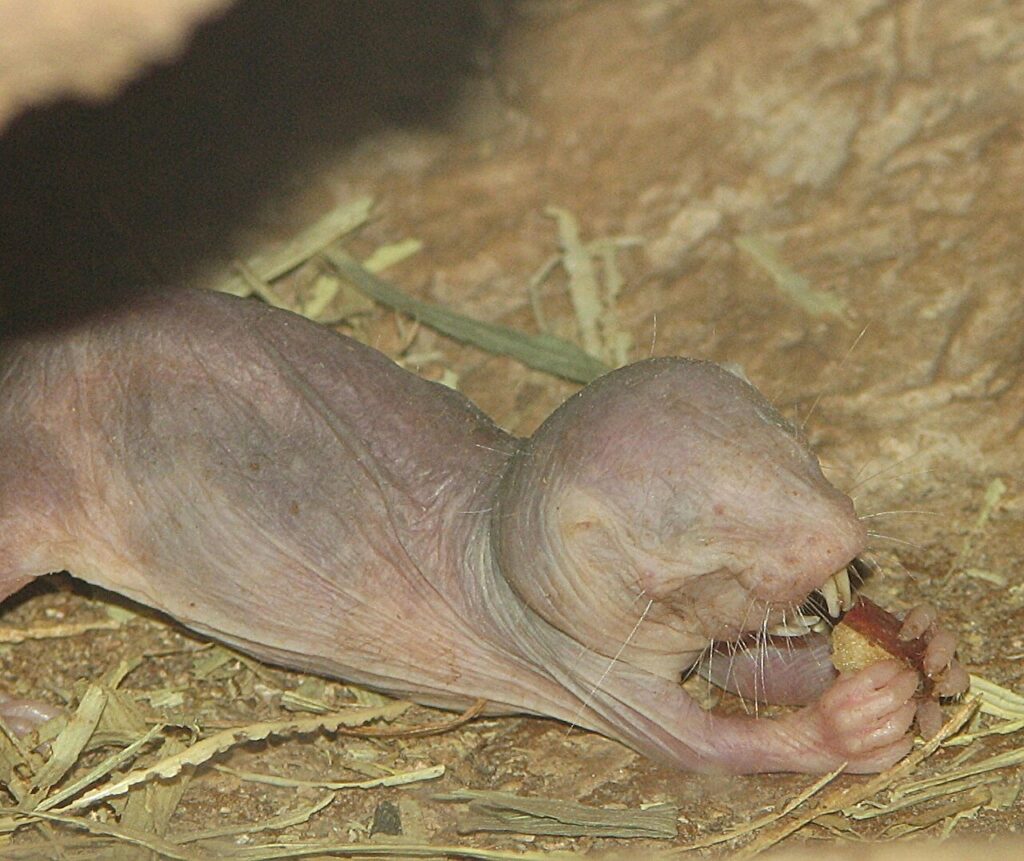
Naked mole-rats, one of nature’s most extraordinary creatures, can live up to 37 years—approximately ten times longer than other rodents of similar size. The secret to their remarkable longevity may lie in a unique switch in a common protein that enhances DNA repair, according to new research published in the journal Science.
Aging in all animals, including humans, is primarily driven by the accumulation of damaged DNA. This genetic wear and tear, if left unrepaired, leads to defective cells, malfunctioning proteins, and ultimately, a breakdown in bodily functions. The study, led by researchers at Tongji University in China, focused on a protein known as cGAS (cyclic GMP-AMP synthase), which typically interferes with DNA repair in most mammals. However, the researchers hypothesized that in naked mole-rats, cGAS might have evolved a different, beneficial function.
Unveiling the Unique Function of cGAS
The research team compared the cGAS protein in naked mole-rats with that in humans and mice. They identified four amino acid changes that alter the protein’s function, enabling it to enhance a cell’s ability to repair damaged DNA. This discovery sheds light on the molecular mechanisms that contribute to the naked mole-rat’s resistance to DNA damage.
To test their hypothesis, scientists inserted the naked mole-rat’s unique cGAS into human and mouse cells in laboratory settings. The result was a significant improvement in the cells’ DNA repair capabilities and a reduction in cellular aging. Further experimentation involved engineering fruit flies to produce naked mole-rat cGAS, resulting in these flies living approximately ten days longer than a control group.
Gene Therapy and Longevity
The researchers also employed gene therapy to introduce naked mole-rat cGAS into mice. The treated rodents displayed less frailty, reduced gray hair, and fewer senescent cells in various organs compared to their untreated counterparts. As the researchers noted,
“This alteration confers naked mole-rat cGAS with a greater capacity to stabilize the genome, counteract cellular senescence and organ aging, and promote extended life span and health span.”
Implications for Human Longevity
This groundbreaking research raises intriguing possibilities about extending human life by modifying amino acids in cGAS. While the potential for human application is enticing, the path to such advancements remains long and complex. Nevertheless, the discovery provides scientists with a promising target for developing therapies to combat age-related diseases.
According to experts, the findings could revolutionize our understanding of aging and longevity. Dr. Emily Roberts, a geneticist not involved in the study, remarked,
“This research opens up new avenues for exploring how we can harness natural mechanisms to improve human health and longevity.”
Looking Ahead
As researchers continue to explore the genetic intricacies of the naked mole-rat, the potential for breakthroughs in age-related therapies grows. The study not only highlights the remarkable adaptations of these creatures but also underscores the importance of understanding fundamental biological processes to address human health challenges.
While the journey towards human application is just beginning, the insights gained from the naked mole-rat’s unique DNA repair mechanism could pave the way for future innovations in medicine and longevity.





